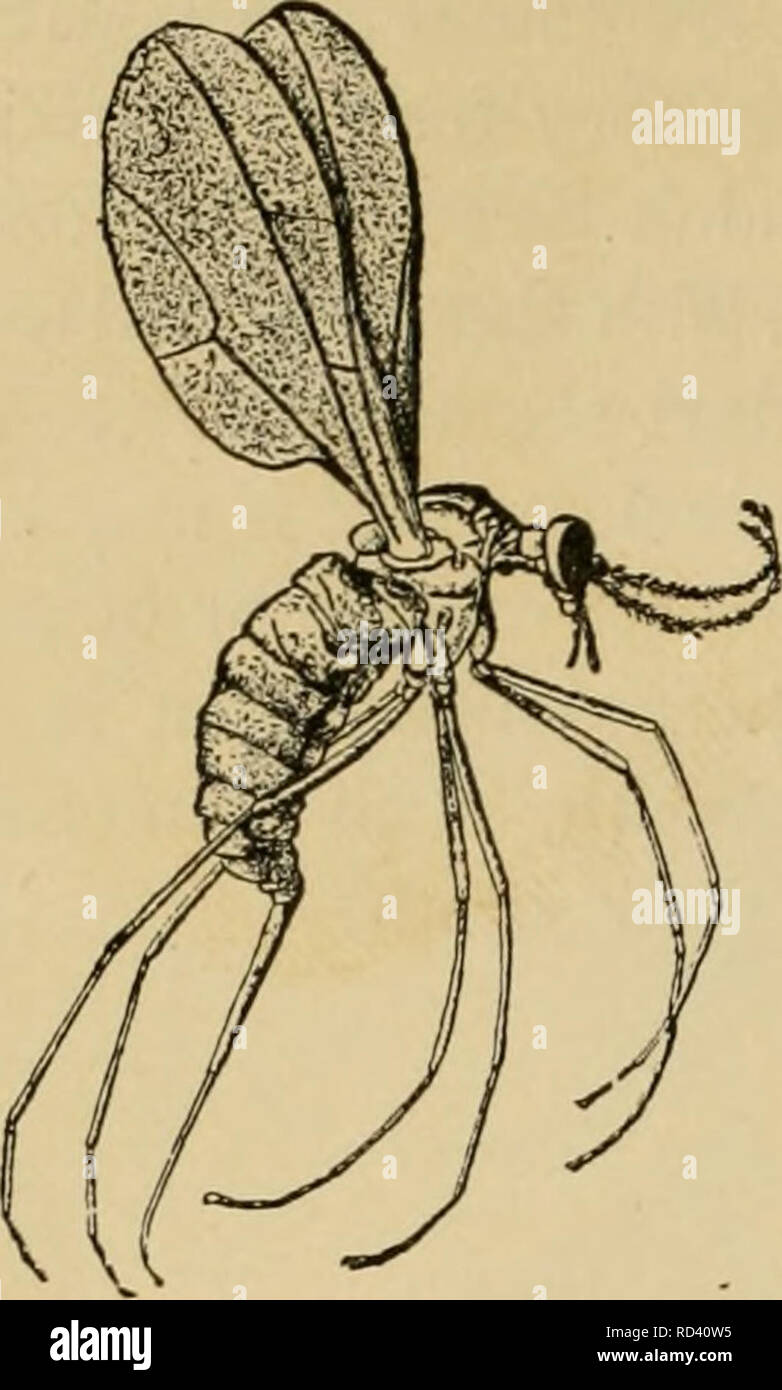. Elementary entomology. Entomology. 228 ELEMENTARY ENTOMOLOGY. Fig. 359. Pear midge {Di- plosis pyrivora). (Enlarged) (After Riley) Gall-gnats. The smallest and most deli- cate of the gnatlike flies are the gall-gnats (Cecidomyiidae). The adults are rarely over one eighth of an inch long, with long antennae clothed with short hairs, and with the wing-veins greatly reduced in number. They will be rarely noticed by the begin- ner, but the work of the larvae is often much in evidence, owing to their feeding within the stems and leaves of plants and giving rise to galls. Frequently a green, cone-

Image details
Contributor:
The Book Worm / Alamy Stock PhotoImage ID:
RD40W5File size:
7.1 MB (217.8 KB Compressed download)Releases:
Model - no | Property - noDo I need a release?Dimensions:
1226 x 2038 px | 20.8 x 34.5 cm | 8.2 x 13.6 inches | 150dpiMore information:
This image is a public domain image, which means either that copyright has expired in the image or the copyright holder has waived their copyright. Alamy charges you a fee for access to the high resolution copy of the image.
This image could have imperfections as it’s either historical or reportage.
. Elementary entomology. Entomology. 228 ELEMENTARY ENTOMOLOGY. Fig. 359. Pear midge {Di- plosis pyrivora). (Enlarged) (After Riley) Gall-gnats. The smallest and most deli- cate of the gnatlike flies are the gall-gnats (Cecidomyiidae). The adults are rarely over one eighth of an inch long, with long antennae clothed with short hairs, and with the wing-veins greatly reduced in number. They will be rarely noticed by the begin- ner, but the work of the larvae is often much in evidence, owing to their feeding within the stems and leaves of plants and giving rise to galls. Frequently a green, cone-shaped gall is found on the tips of willow twigs, known as the pine-cone willow-gall, which is caused by one of these larvae {Cccidoviyia strobiloides). The larvae of the clover-seed midge live in the heads of clover and destroy the seed so that in many sections it is often impossible to mature it. The best-known exam- ple of the family, andourworstwheat pest, isthe Hessian fly, so called be- cause it was sup- posedly introduced in straw brought over to Long Is- land by the Hes- sian troops during the Revolutionary War. The mag- gots bore into the crown and stalks of wheat, weaken- ing the plant and seriously curtailing production where they are abundant.. Please note that these images are extracted from scanned page images that may have been digitally enhanced for readability - coloration and appearance of these illustrations may not perfectly resemble the original work.. Sanderson, Dwight, 1878-1944; Jackson, C. F. (Cicero Floyd), b. 1882; Metcalf Collection (North Carolina State University). NCRS. Boston, Ginn